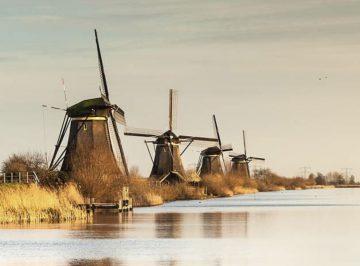Molly Quell in Undark:
 TOURISTS VISITING the Netherlands often stop to take selfies in front of one of the country’s more than 1,000 windmills. Afterward, they might taste one of the many varieties of cheese for which the nation is famous. But most are unaware that these two icons of the Netherlands are responsible for causing the nation’s land to sink.
TOURISTS VISITING the Netherlands often stop to take selfies in front of one of the country’s more than 1,000 windmills. Afterward, they might taste one of the many varieties of cheese for which the nation is famous. But most are unaware that these two icons of the Netherlands are responsible for causing the nation’s land to sink.
The windmills were used for centuries to drain peatland for cattle grazing and agriculture at large, and that draining — these days done by pumping stations — is causing the land in some places to sink at an average rate of 8 millimeters per year, or about one-third of an inch. (In some areas, researchers put that number higher, at several centimeters per year.)
This subsidence means that in a low-lying nation famous for engineering its way around rising seas, the ground is also sinking lower, creating huge problems for the structures built on top. At a certain point, building foundations begin to crack, sinkholes appear, roads destabilize, and the risk of flooding increases. More construction results in more pressing down of the peat — and more subsidence.
More here.
